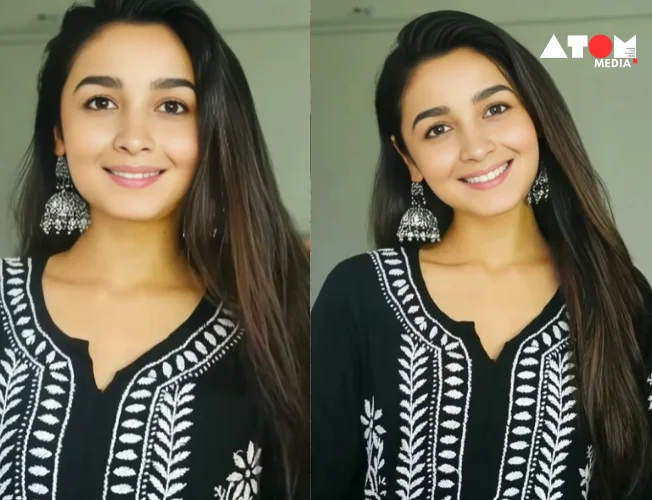Alia Bhatt, a popular Bollywood actress, has once again become a target of deepfake technology. A recent video circulating online shows Bhatt participating in the famous “Get Ready With Me” (GRWM) trend on social media. The video, however, is fully faked, with Bhatt’s face smoothly superimposed onto another person’s body using artificial intelligence (AI) technology.
This incident has raised new concerns about the growing ubiquity and hazards of deepfakes. Fans have raised concern on social media, emphasizing the increasingly sophisticated nature of AI and its potential for abuse. This article examines Alia Bhatt’s latest deepfake video, the broader context of deepfakes in India, and the ethical and safety implications.
Alia Bhatt’s Deepfake Frenzy
This is not the first time Bhatt has been impersonated with deepfakes. In May 2024, a similar video went viral, showing Bhatt’s face superimposed on actress Wamiqa Gabbi’s body. The current GRWM video, shared on Instagram by a user named “Sameeksha Avtr,” has already received over 17 million views, despite the user’s bio warning noting that the videos are “for entertainment purposes only.”
Fan Reactions and Ethical Concerns
Bhatt’s fans have expressed their concerns online. Comments like “AI is getting dangerous day by day” and “Feeling bad for those who think it’s real” indicate the growing public worry over deepfakes. The ability to smoothly change reality raises ethical concerns about prospective uses such as defamation, false narrative creation, and even election influence.
The Rise of Deepfakes in India
Deepfakes are not new globally, but their emergence in India is a recent phenomenon. Several high-profile figures, including actors like Rashmika Mandanna and politicians like Amit Shah, have been victims of deepfake manipulation. This trend highlights the need for public awareness and potential regulatory measures.
How Deepfakes Work
Deepfakes use artificial intelligence, specifically machine learning algorithms, to construct extremely accurate and convincing forgeries. The approach usually entails building a deep learning model on massive datasets of photos or videos of the target subject. This model is then trained to recognize and mimic facial traits, expressions, and even speech patterns. With this information, the AI may flawlessly overlay the target person’s face on another body or create completely new video footage.
The Deepfake Landscape: From Entertainment to Malice
While some deepfakes are created for entertainment purposes, like parodies or humorous content, the potential for malicious use is a serious concern. Deepfakes could be used to spread misinformation, damage reputations, or manipulate public opinion. Malicious actors could create deepfakes of politicians delivering fake speeches or celebrities engaging in compromising behavior.
Combating Deepfakes: Challenges and Solutions
Combating deepfakes requires a multi-pronged approach. Here are some key considerations:
- Technological Solutions: Advancements in AI can also be used to detect deepfakes. Researchers are developing tools that analyze video and audio characteristics to identify inconsistencies indicative of manipulation.
- Public Awareness: Educating the public about deepfakes is crucial. People need to be critical consumers of online content and verify information before sharing it.
- Regulation and Legal Frameworks: Developing legal frameworks to address the misuse of deepfakes is essential. Regulations concerning content creation, distribution, and potential penalties for malicious use are necessary.
The Future of Deepfakes
Deepfakes are a rapidly evolving technology with the potential for both positive and negative uses. As AI advancements continue, the challenge of differentiating between real and fabricated content will become increasingly difficult. By fostering open dialogue, investing in technological solutions, and establishing clear legal guidelines, society can work towards mitigating the potential harm of deepfakes and harnessing their potential benefits.
The case of Alia Bhatt highlights the growing prevalence of deepfakes and the associated concerns. Addressing these concerns requires collaboration between technology companies, policymakers, and the public. By fostering a responsible and ethical approach to AI development and use, we can leverage the power of this technology for good while mitigating the risks associated with deepfakes.
Read more: Marketing News, Advertising News, PR and Finance News, Digital News





